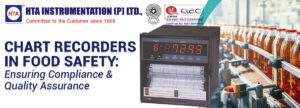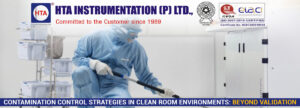
Sound Level Calibration in Live Events: Ensuring Clear and Consistent Audio for Audiences
In the world of live events, be it concerts, conferences, or festivals, delivering an impeccable audio experience is paramount. The success of any event is

In the realm of industrial automation, PID controllers play a pivotal role in maintaining precision and stability in various processes. As a leading player in the field, HTA Instrumentation Pvt Ltd brings you a comprehensive guide to PID controllers – their types, functions, and operational principles. Let’s delve into the intricacies of this crucial component that powers efficiency in industrial processes.
Understanding PID Controllers:
PID stands for Proportional, Integral, and Derivative, which are the three fundamental components of a PID controller. This control algorithm is widely employed in industrial automation to regulate processes and ensure optimal performance. Let’s break down the core elements:
Types of PID Controllers:
PID controllers come in various types, each catering to specific applications and industries. Some common types include:
How PID Controllers Work:
The working principle of PID controllers involves continuous monitoring of the process variable, comparing it to the setpoint, and adjusting the control output accordingly. The proportional, integral, and derivative actions work together to achieve a fine balance between stability and responsiveness, ensuring the system operates at peak efficiency.
In conclusion, PID controllers are the backbone of industrial automation, providing the precision and control needed for various processes. HTA Instrumentation Pvt Ltd takes pride in offering cutting-edge PID controllers tailored to meet the demands of modern industries. Embrace the power of PID control and elevate your industrial processes to new heights of efficiency and reliability with HTA Instrumentation Pvt Ltd.

In the world of live events, be it concerts, conferences, or festivals, delivering an impeccable audio experience is paramount. The success of any event is

In the ever-evolving landscape of industries, maintaining optimal conditions for storage and transportation of sensitive products is paramount. Temperature-sensitive goods, such as pharmaceuticals, biotechnological products,

In the dynamic world of food safety, maintaining compliance and ensuring quality assurance are paramount for businesses. One integral tool that plays a crucial role

In the realm of precision industries such as pharmaceuticals, biotechnology, and electronics manufacturing, maintaining a sterile and controlled environment is paramount. Clean rooms play a
